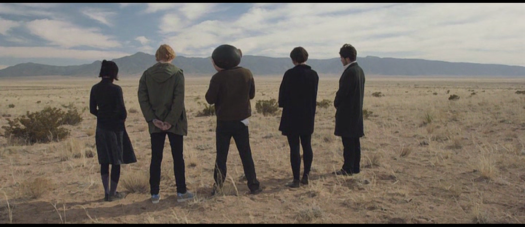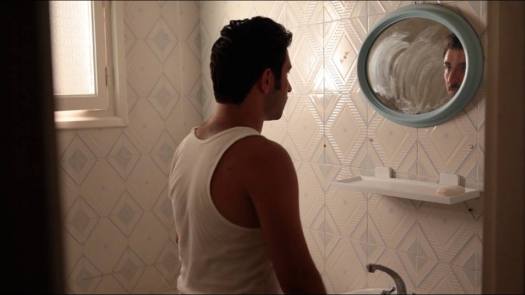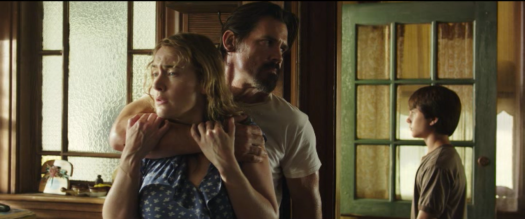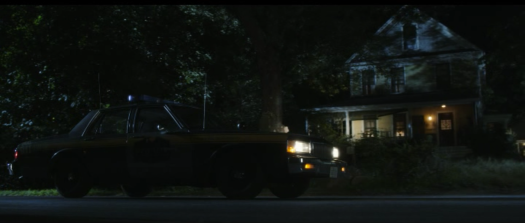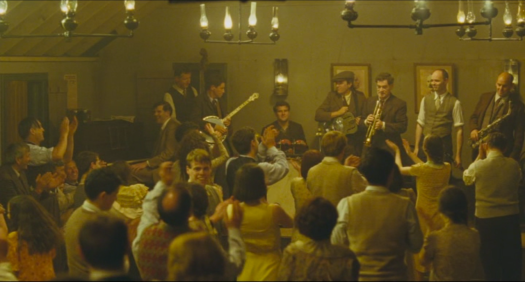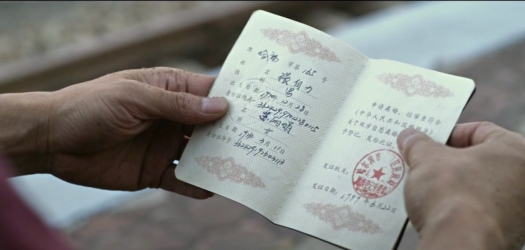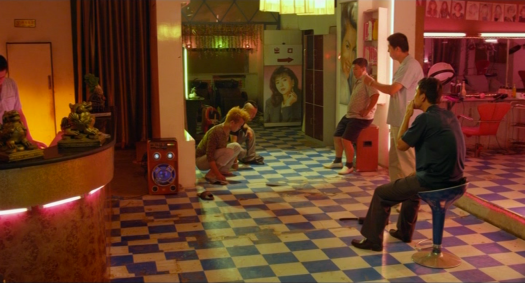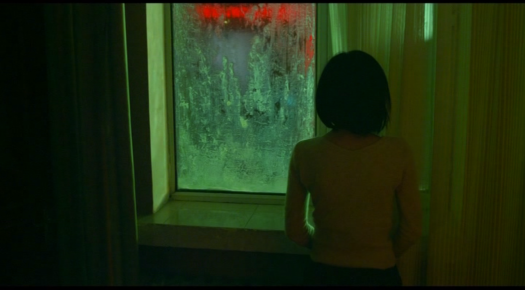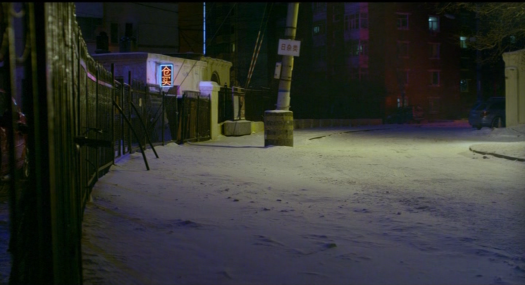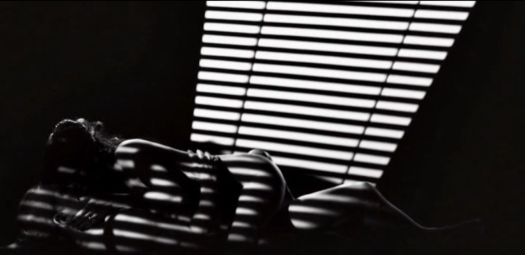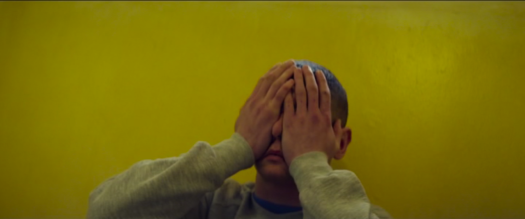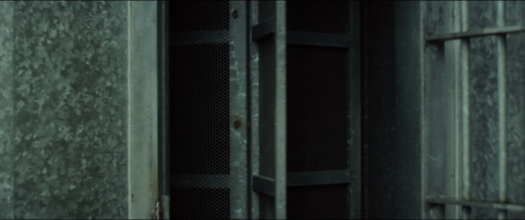Frank provoked something in me. It was one of those movie reaching me through unknown patterns and shaking things up slowly but intensely.
 Directed by Lenny Abrahamson and starring Michael Fassbender in the role of Frank, Maggie Gyllenhaal as Clara and Domhnall Gleeson interpreting Jon, the movie approaches some of the deep depths of music and its process of creation.
Directed by Lenny Abrahamson and starring Michael Fassbender in the role of Frank, Maggie Gyllenhaal as Clara and Domhnall Gleeson interpreting Jon, the movie approaches some of the deep depths of music and its process of creation.
The movie starts by introducing us to Jon, a red headed artist in search of inspiration for his music compositions. As many artists, he picks up things he sees in the street and try to create something by combining them altogether.

 But, well, it doesn’t always work that way. Something is lacking, originality? Beauty? Depth? Hard to put a finger on it. Jon’s dream is to be known, to play in a band, be part of something as powerful as that.
But, well, it doesn’t always work that way. Something is lacking, originality? Beauty? Depth? Hard to put a finger on it. Jon’s dream is to be known, to play in a band, be part of something as powerful as that.
Lucky for him, all day, weird signs announced a very close event that will happen and change the boring course of his life. Indeed, he assists to the drowning of a band’s keyboardist and got chosen to replace him.
His first experience will then be with total strangers composing very experimental music (which reminded me of the music played by Allison in Yes Man).
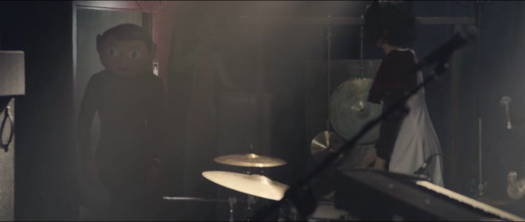 Starting from that, we enter a total new world, where everything seems extremely sensitive, where every sound becomes source of inspiration, resource for creation, element of rawness and produces a very unique music, that isn’t made of artifices.
Starting from that, we enter a total new world, where everything seems extremely sensitive, where every sound becomes source of inspiration, resource for creation, element of rawness and produces a very unique music, that isn’t made of artifices.
Actor, Domhnall Gleeson played to the perfection his role, along with Fassbender and Gyllenhaal, that are flabbergasting, and boasting incredible emotions. Jon, enter a band linked not only by the music, but by unbreakable bonds, or should I say, one bond embodied by Frank.
Abrahamson’s camera is an eye to an intense, full of musical tensions, closed and intimate space, where you could almost see thin electricity lines surrounding the characters, during their fusion for creation.
 The movie tackles the issue at the core of many contemporain debates; is music supposed to please the ones making it, or the ones who’ll hear it?
The movie tackles the issue at the core of many contemporain debates; is music supposed to please the ones making it, or the ones who’ll hear it?
Once musiciens comply to others’ tastes they are fully under the control of their listeners and loose their personal touch, and give up on the emotion their music was supposed to convey; one of the most tremendous loss.
What is amazing, is the sensitiveness emanating from Fassbender, wearing that big head as a mask protecting from the surrounding world but also as a symbol to what kind of musician Frank is. He has a strong, overwhelming empathy and is a mystery that isn’t supposed to be puzzled out.
The incomprehension but also the admiration Jon is bearing for Frank, is somehow destructive. Just like fans, he wants to see Frank naked, naked from his mask, but also naked from any mystery; that could dangerously lead to loosing all creativity and powerfulness.
 Maggie Gyllenhaal performance is outstanding, she played Clara is way that is very poignant. Her character is complex; protective but authoritarian, creative but castrator.
Maggie Gyllenhaal performance is outstanding, she played Clara is way that is very poignant. Her character is complex; protective but authoritarian, creative but castrator.
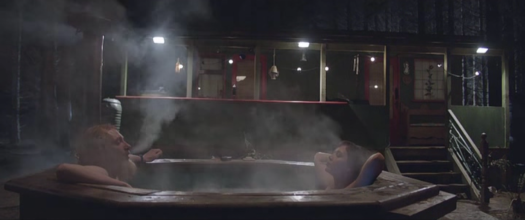 What pinched my heart, and the point where Abrahamson’s movie conquered me was when Frank is showed as embodying the musician, embodying what’s going on many musician’s heads, that is bearing a double meaning. It is all in his head.
What pinched my heart, and the point where Abrahamson’s movie conquered me was when Frank is showed as embodying the musician, embodying what’s going on many musician’s heads, that is bearing a double meaning. It is all in his head.
But then, when we learn in the beginning of the film that Frank was in psychiatric hospital along with his manager Don (Scoot McNairy), a question has to be asked; is Frank, under the mask really disfigured or is he just mentally ill?
And this is where the director’s played a little, with words and images. Where the complexity of music is well captured by the director and the actors; all the sensitivity that can be coming from mentally ill people, and again the metaphor is confusing. However, Frank – whether it is the movie or the character – is fucking poignant.
